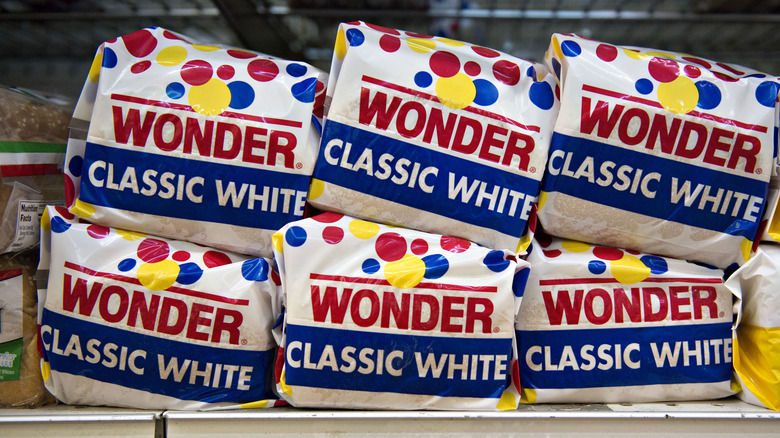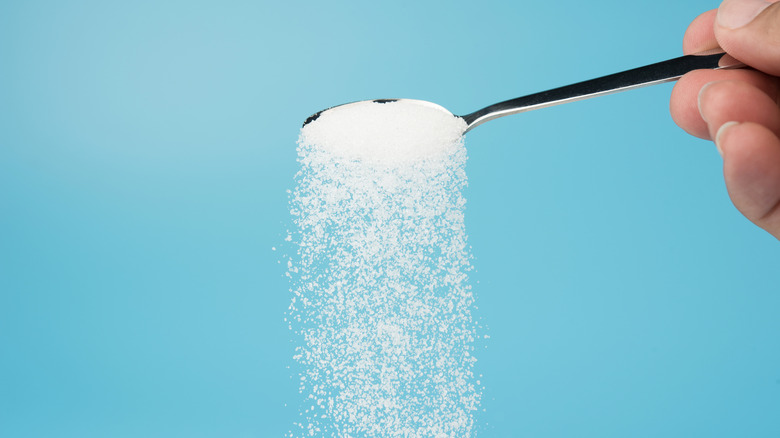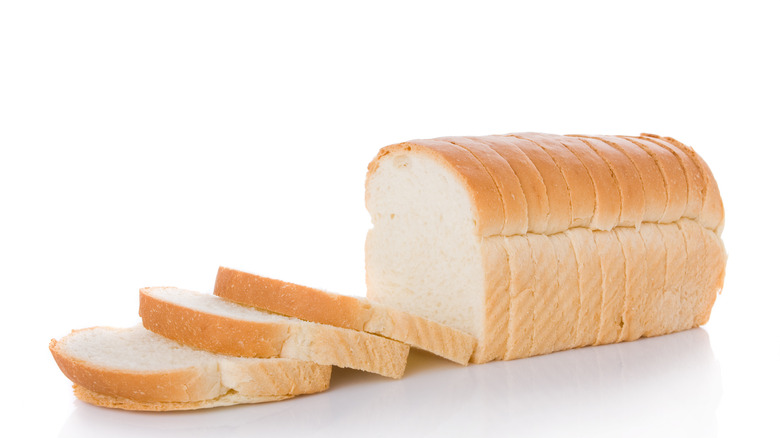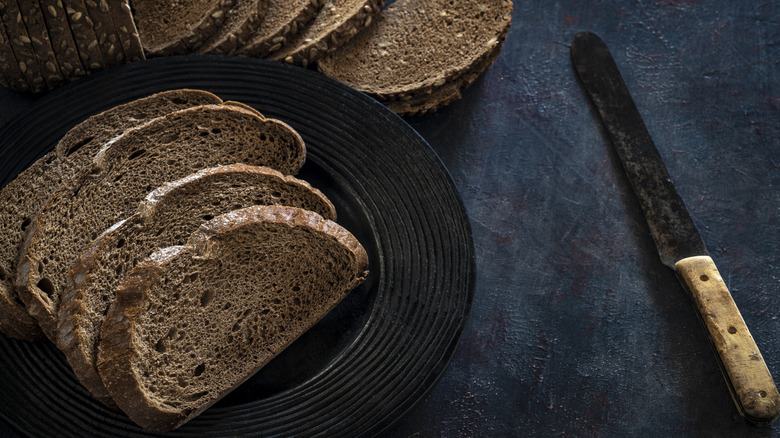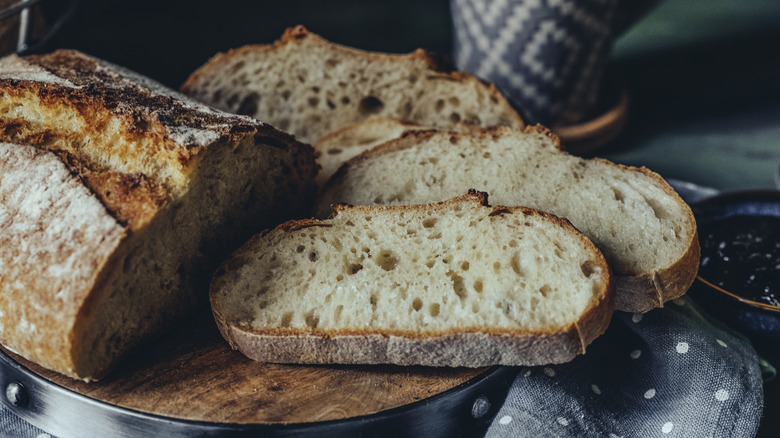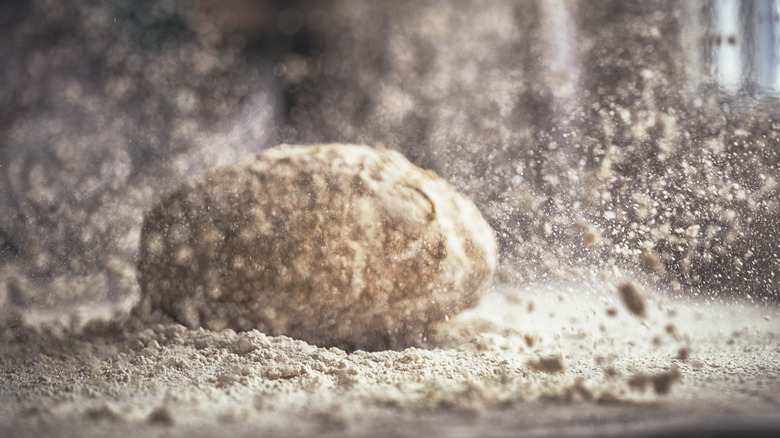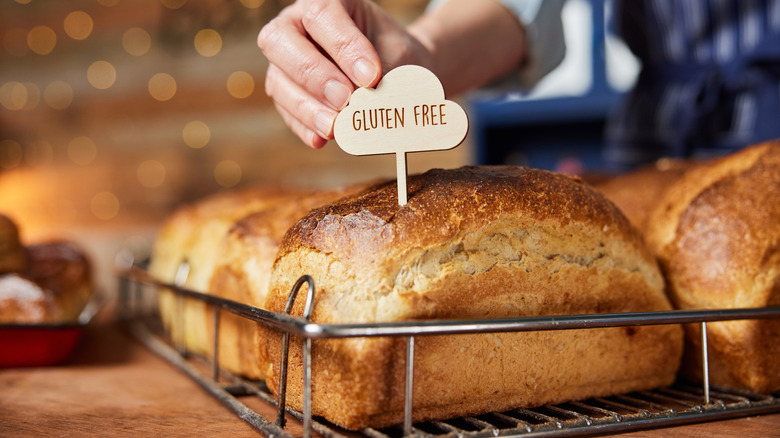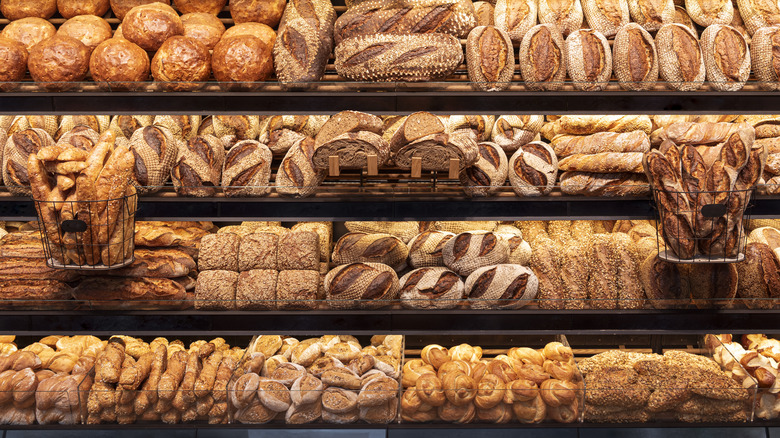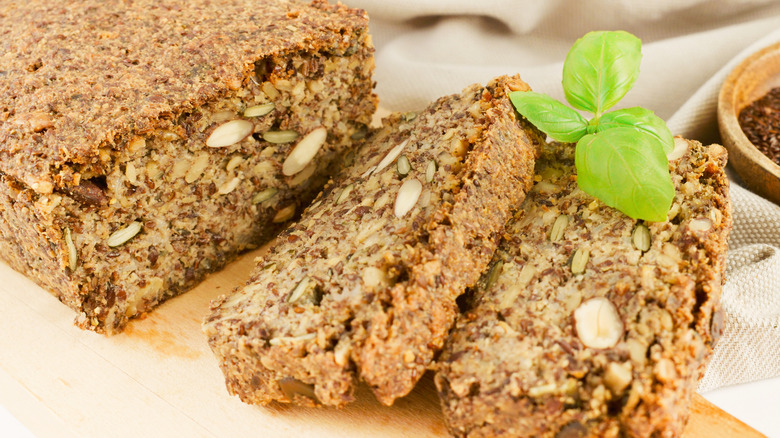Why People Stopped Eating Wonder Bread
Wonder Bread holds a special place in American food history. For decades, it was the standard white loaf that graced countless kitchen tables across the nation. Its soft, pillowy texture and seemingly endless shelf life made it a staple. However, the times — as they often do — have brought about profound changes in dietary preferences and awareness. As a result, the iconic status of Wonder Bread has decreased considerably.
There was a time when Wonder Bread was considered a healthy food. In the 1940s, Wonder Bread started using fortified flour enriched with vitamins and minerals. This played a part in eradicating several conditions linked to poor nutrition. But today, the same bread is considered unhealthy by many because of its high salt and sugar content and long list of additives.
It's for these reasons and more that many people have stopped eating Wonder Bread. Beyond health considerations, many buyers want a more diverse, authentic, and sustainable culinary experience — and this has shifted consumer preferences. Artisanal and specialty breads, hailing from various corners of the planet, have gained popularity as people explore the variety of global bread-making traditions.
We're going to look at some of the many reasons behind the decline of this once-beloved bread, tracing the shifts in consumer habits and priorities that have transformed the American breadbasket. Whether you love or hate Wonder Bread, here's why people have stopped eating it as much.
To avoid its high sugar and salt content
While Wonder Bread has been ubiquitous in America for decades, concerns over excessive sodium and sugar intake have led consumers to rethink their bread choices. Many health-conscious individuals are avoiding this bread due to its high salt and sugar content.
Every two slices of Classic White Wonder Bread contain 5 grams of sugar and 180 milligrams of sodium. While there are sweeter breads out there for sure, that's still a lot of sugar for just two slices of bread. That's before we even get onto the salt content. The amount of sodium in two slices of Wonder Bread is 8% of your daily allowance, which, again, is a significant amount for a mere two slices.
Although there's nothing wrong with consuming sugar and salt in moderation, many people would rather use up their daily allocation on something like a dessert treat rather than a middle-of-the-road item like Wonder Bread. So, we can see why folks could have abandoned Wonder Bread based on its sodium and sugar content.
Concerns about food additives
If somebody asked you what bread is made from, you'd probably say something like "flour, water, yeast, and salt." However, Wonder Bread has a long list of ingredients including many you've probably never heard of. You wouldn't put sodium stearoyl lactylate, calcium sulfate, or azodicarbonamide in a homemade loaf, so what's it doing in Wonder Bread?
Wonder Bread, like many other processed foods, contains a variety of additives including preservatives, flavor enhancers, and stabilizers. Some consumers are concerned about the potential health effects of food additives. While many additives are considered safe by regulatory authorities when consumed within established limits, there is ongoing debate and research about the long-term health consequences of certain additives. So, some people take a precautionary approach and avoid foods with lengthy ingredient lists.
What's more, increased awareness of food labels has empowered consumers to make more informed choices. Many folks like to know and understand what's in their food. Those who take the time to read labels may be deterred by the presence of numerous chemical-sounding additives in Wonder Bread, leading them to seek simpler, more transparent alternatives.
With all that said, food additives serve various purposes, such as extending shelf life, enhancing texture, and improving taste. Regulatory agencies like the Food and Drugs Administration (FDA) in the United States assess the safety of food additives before allowing their use in food products. While some consumers avoid Wonder Bread and similar products due to their additive content, the FDA doesn't necessarily share these specific concerns.
Because of increased interest in whole-grain bread
Whole-grain bread has gained popularity and is often chosen over products like Wonder Bread due to its overall health benefits and superior nutritional profile. A 2021 Food and Health Survey from the International Food Information Council found that half of consumers are trying to eat more whole grains.
Whole-grain bread is made from whole grains that retain all three parts of the grain kernel — the bran, germ, and endosperm. This means it contains a more extensive range of nutrients, including dietary fiber, vitamins (such as B vitamins), minerals (like magnesium and iron), and antioxidants.
Whole grain bread is notably higher in dietary fiber compared to white bread like Wonder Bread. Fiber aids with digestion, helps maintain bowel regularity, and may reduce the risk of certain gastrointestinal conditions. The fiber in whole-grain bread also slows down the absorption of sugars into the bloodstream, which can help regulate blood sugar levels. This is particularly important for individuals with diabetes or those seeking to prevent blood sugar spikes and crashes.
Increased consumption of whole grains has been associated with improved heart health. The soluble fiber it contains may help lower LDL cholesterol levels (the "bad" cholesterol), reducing the risk of heart disease.
In contrast, white bread, like Wonder Bread, is made from refined grains, which have had the bran and germ removed, leaving behind primarily the starchy endosperm. As a result, white bread lacks many of the nutrients and dietary fiber found in whole-grain bread.
Artisan bread became more popular
In part, the decline in popularity of Wonder Bread can be attributed to the burgeoning interest in artisan bread. As consumers become more discerning about their food and search for higher quality, more flavorful, and more wholesome options, Wonder Bread becomes less appealing. Mass-produced, uniform Wonder Bread faces stiff competition from the world of artisanal bread making.
Artisan bread is often made by skilled bakers who take pride in their craft. They tend to use time-honored techniques that involve longer fermentation periods, natural yeast starters (such as sourdough), and hand shaping. The result is bread with superior flavor, texture, and aroma compared to the standardized production of Wonder Bread. This type of bread also comes in an array of varieties, each with its distinct flavor and texture. From rustic sourdough to hearty whole-grain loaves and focaccia studded with garlic and rosemary, artisan bread gives buyers an exciting range of flavors to explore.
There's also the fact that many artisan breads are made with natural ingredients. This avoids the additives, preservatives, and excessive sugar and salt found in Wonder Bread and aligns with the growing interest in healthier, more nutritious dietary choices. Some people also like to buy local, and artisan bakeries often prioritize local sourcing of ingredients. This may support local farmers and reduce the carbon footprint associated with transporting ingredients over long distances. This commitment to sustainability resonates with environmentally conscious consumers.
There's more interest in baking bread at home
Another reason why people have stopped eating Wonder Bread is due to the increased interest in baking bread at home – especially sourdough. As more of us discover the joys and rewards of crafting our own bread from scratch, the appeal of Wonder Bread has dwindled.
You can't beat homemade bread for its freshness and flavor. The aroma of freshly baked bread wafting through the kitchen and the satisfaction of biting into a warm, crusty homemade loaf are experiences that many find irresistible. What's more, home bakers have complete control over the ingredients that go into their bread. This means they can choose high-quality, natural, and organic ingredients while avoiding additives, preservatives, and excessive salt or sugar — common elements in commercial bread.
Plus, for many, baking bread is a creative or relaxing outlet. Kneading, shaping, and watching dough rise can be fulfilling. Some people also turn to baking bread at home as a way to save money. So, while Wonder Bread and other commercial bread products remain readily available and convenient, the allure of homemade bread is too much for some. They'd rather bake their own bread — knowing what's in it and that it's going to taste great — than pick up a basic loaf from the store.
Gluten sensitivity and celiac disease are on the rise
The increasing prevalence of gluten sensitivity and celiac disease is at least one small reason why Wonder Bread is losing popularity. As more people are diagnosed with these conditions or choose to adopt gluten-free diets for various reasons, the demand for gluten-free alternatives has surged. This has led to fewer people eating traditional wheat-based bread like Wonder Bread.
Over the past decade, there has been a significant increase in awareness and diagnosis of gluten-related disorders, particularly celiac disease and non-celiac gluten sensitivity. As people become more informed about these conditions, they are more likely to avoid products containing gluten.
Celiac disease is an autoimmune disorder in which the consumption of gluten triggers an immune response that damages the small intestine. The growing understanding of celiac disease, along with improved diagnostic methods, has led to more individuals being diagnosed. Those with celiac disease must strictly adhere to a gluten-free diet, eliminating all sources of gluten, which Wonder Bread contains a relatively high amount of.
Some individuals experience symptoms similar to those of celiac disease when consuming gluten-containing foods but do not test positive for celiac disease or wheat allergy. This condition, known as non-celiac gluten sensitivity, has also contributed to the demand for gluten-free alternatives.
Wonder Bread and other wheat-based bread products still have their place in the market, however the increasing prevalence of gluten sensitivity and celiac disease has driven a significant shift in consumer behavior.
People are choosing a wider range of breads
The landscape of bread consumption is changing, and Wonder Bread takes up a smaller part of it. As consumers become more adventurous in their culinary tastes and increasingly value variety, Wonder Bread faces competition from a wide range of bread options.
There are so many types of bread out there – from soft, fluffy breads like brioche and challah to chewy bagels and baguettes. So, why would people choose Wonder Bread every time? As dietary preferences become more varied, consumers are exploring different bread types. Sometimes this might be for taste alone, while other times it might be due to dietary requirements or preferences.
And let's not forget that we live in a global society. This has exposed us to all kinds of bread traditions from various cultures. Many people are drawn to these diverse breads for their unique flavors, textures, and cultural significance, making choices beyond traditional white bread more appealing.
So many people view bread as more than just a staple — it's a culinary experience. As such, they want to explore a range of breads to elevate their meals and enjoy the artistry of breadmaking. A simple, mass-produced white loaf just isn't good enough for many consumers anymore.
While Wonder Bread still maintains a presence in the bread market, the evolving tastes of today's consumers have led to more bread choices. As a result, people are enjoying a rich and varied bread landscape, experimenting with different flavors, textures, and cultural influences.
The trend for low-carb and keto diets
The trend for low-carb and ketogenic (keto) diets may be part of the reason why fewer people are eating Wonder Bread. Both of these diets center around the reduction of carbohydrate intake, so bread is off the table for many of their proponents. While there's not necessarily a general reason to avoid carbohydrates for your health, these diets still prove popular and therefore influence people's buying patterns.
Low-carb and keto diets advocate for a significant reduction in carbohydrate consumption. Given that Wonder Bread is a high-carb product, it is often excluded from the diets of those adhering to these eating plans. This shift has contributed to decreased demand for traditional wheat-based bread.
Low-carb and keto diets also emphasize the consumption of healthy fats. As individuals prioritize sources of healthy fats, they may opt for products that contain healthier fat sources, such as nuts, seeds, and oils.
As the popularity of low-carb and keto diets has grown, so too has the availability of bread options formulated to align with these approaches to eating. Keto-friendly breads are designed to be low in net carbs, making them more suitable for those following low-carb or keto diets.
These dietary patterns continue to influence consumer choices, so the demand for low-carb and keto-friendly bread alternatives is expected to persist. This impacts the market for traditional bread like Wonder Bread.
People don't like the taste
One big reason why people aren't eating Wonder Bread as much as they used to? Well, it's simply a matter of taste. While taste is subjective and can vary from person to person, many people think Wonder Bread tastes boring at best and bad at worst.
Wonder Bread is often described as bland. Its uniform, mild taste lacks the depth, character, and complexity that many consumers now look for in their bread. What's more, its high sugar content means that it's fairly sweet. While some people like sweetness in their bread, others find it unappealing. Many folks are drawn to artisanal breads that boast a rich, robust flavor profile. These breads often feature natural fermentation, complex grains, and unique combinations of ingredients. Wonder Bread can't compete with these kinds of flavors and so not as many people want to eat it.
Then there's the issue of freshness. Wonder Bread is a factory-produced product with a long shelf life. Compared with the freshness of bread baked in local bakeries or at home, it just isn't the same. Texture matters, too. Bread texture is another critical element of taste. While Wonder Bread is known for its soft, squishy texture, some consumers prefer bread with a heartier, chewier texture.
As people's palates evolve and become more sophisticated, they often seek out foods with robust flavors. This has led to a preference for breads that are more distinctive. Poor, simple Wonder Bread doesn't measure up.
The trend toward clean eating
Wonder Bread doesn't cut it for fans of eating clean. This dietary philosophy – which is becoming more and more popular — emphasizes the consumption of whole, minimally processed foods and the avoidance of artificial additives, preservatives, and overly refined ingredients.
Clean eating encourages consumers to scrutinize food labels and seek transparency in ingredient lists. Wonder Bread has a long list of ingredients, including additives and preservatives. This lack of simplicity and transparency can deter clean eaters. People who eat clean avoid artificial additives and preservatives commonly found in processed foods like Wonder Bread. Ingredients like high fructose corn syrup, artificial flavors, and artificial colors are often seen as undesirable in the context of clean eating.
Clean eating also emphasizes the importance of consuming whole, unprocessed ingredients. Wonder Bread, being a refined and processed product, lacks the whole grains and natural ingredients that align with this philosophy. What's more, clean eaters tend to gravitate toward foods that have undergone minimal processing. Wonder Bread is a product of industrialized baking and doesn't pass muster.
The clean eating philosophy also places a premium on the nutritional quality of foods. While Wonder Bread may be enriched with vitamins and minerals, it lacks the nutrient density and fiber content of whole-grain and artisanal breads, which are favored by clean eaters. While we aren't saying that everyone should eat in this way, it's a popular dietary philosophy and may be affecting Wonder Bread's popularity.
More people are aware of nutrition labels — and Wonder Bread doesn't cut it
People are now more aware of nutritional fact labels and this might be one of the reasons why Wonder Bread has become less popular over time. As consumers become more health-conscious and knowledgeable about the nutritional content of the foods they consume, they may find that Wonder Bread falls short of their dietary expectations. Maybe they're concerned about additives, or a lack of fiber, or any number of other nutritional considerations — Wonder Bread simply isn't the healthiest bread you can buy in most stores, and its relatively low price isn't as enticing as it might've been for previous generations.
As shoppers become more adept at comparing products based on their nutrition labels, they may opt for bread options that offer a better balance of nutrients and fewer undesirable additives. Wonder Bread's nutritional profile, particularly its sugar and sodium content, often falls short of the expectations of nutrition-savvy consumers. So, we can understand why they might end up picking up something else while browsing the grocery aisle.
